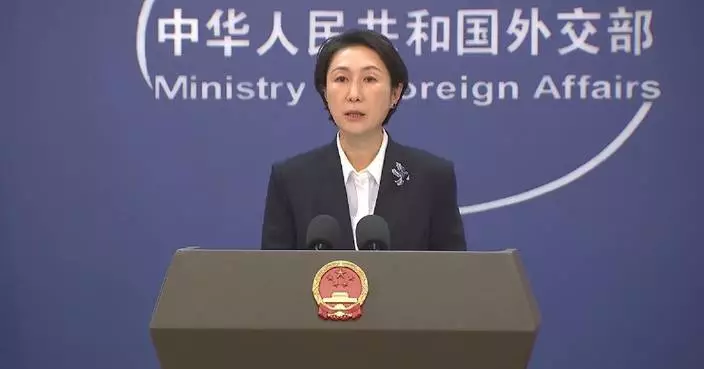Northwest China's Xinjiang Uygur Autonomous Region will soon complete its monumental project of looping around Taklimakan Desert, China's largest desert, with barriers to curb its expansion.
Covering a staggering expanse of over 337,000 square kilometers, Taklimakan, also the world's second largest moving desert, is infamously known as the "Sea of Death".
To stop its dunes from intruding nearby villages, Xinjiang had finished building 2,761 kilometers of barriers of the closed-loop project encircling the whole Taklimakan Desert by the end of 2023.
This year, Xinjiang has constructed about 284 kilometers of barriers for the project, with the remaining one kilometer scheduled to be finished in Yutian County of Hotan Prefecture on Thursday.
The part in Pishan County of Hotan Prefecture, which was completed on Wednesday, uses multiple layers of barriers made with wooden poles and reeds to prevent moving of dunes.
The remaining one kilometer of the project in Yutian County uses several kinds of plants, including trees to block the desert.
According to the results of the sixth national monitoring survey on desertification released at the end of 2022, the areas of desertified land and sandified land had both shrunk in Xinjiang, which thus ended its history of the only provincial-level region in China with expansion of sandified land, and made contributions to consolidating protective barriers for ecological security in northwestern China.

Xinjiang to complete monumental control project on China's largest desert
A delegation of 40 students and teachers from seven Chinese mainland universities arrived at Taiwan's Taoyuan International Airport on Wednesday, embarking on their nine-day visit to the island.
Invited by the Taiwan-based Ma Ying-jeou Culture and Education Foundation, the delegation is led by Qiu Yong, chairman of Tsinghua University Council.
The delegation includes table tennis Olympic champion Ma Long studying at Beijing Sport University, and air rifle Olympic champion Yang Qian studying at Tsinghua University.
"I came from Taipei today, and I arrived at Taoyuan Airport at 09:30 because I was worried that there would be too many people here. I brought the photos that my friends sent me today, and I'm very happy. I also wrote a letter to Ma Long because I was worried that I would be too excited if I really saw him in person. We welcome students from the mainland to come to Taiwan for exchanges, and wish them to enjoy delicious food and drink and have fun here," said Lai Chin-hsuan, a Taiwan resident.
This is the second delegation of mainland teachers and students visiting Taiwan at the invitation of the Ma Ying-jeou Foundation, following the first delegation in July last year.
The delegation visited a high school on Wednesday afternoon as scheduled.
Hsiao Hsu-tsen, executive director of the foundation, said exchanges and contacts between young people of the mainland and Taiwan region are very important to the development of cross-Strait relations.
"When I arrived earlier, the fans had already lining up at the airport a few hours in advance, so I really think this is a very exciting phenomenon. It means that no matter how depressed the cross-Strait relationship is, sports and youth exchanges will always be common topics and language between the two sides. College students and high school students on both sides of the Taiwan Strait need to know each other very much. I think it is very meaningful to have so many top mainland students visit our most outstanding high school in Taiwan today," said Hsiao.
Besides the high school, the delegation is scheduled to visit some universities, the Taipei 101 tower and the Taipei Palace Museum from Nov 28 to 30. It will also visit the Sun Moon Lake, participate in a baseball activity and visit another historical museum from Dec 1 to 4.

Delegation of mainland university students, teachers embarks on Taiwan visit










